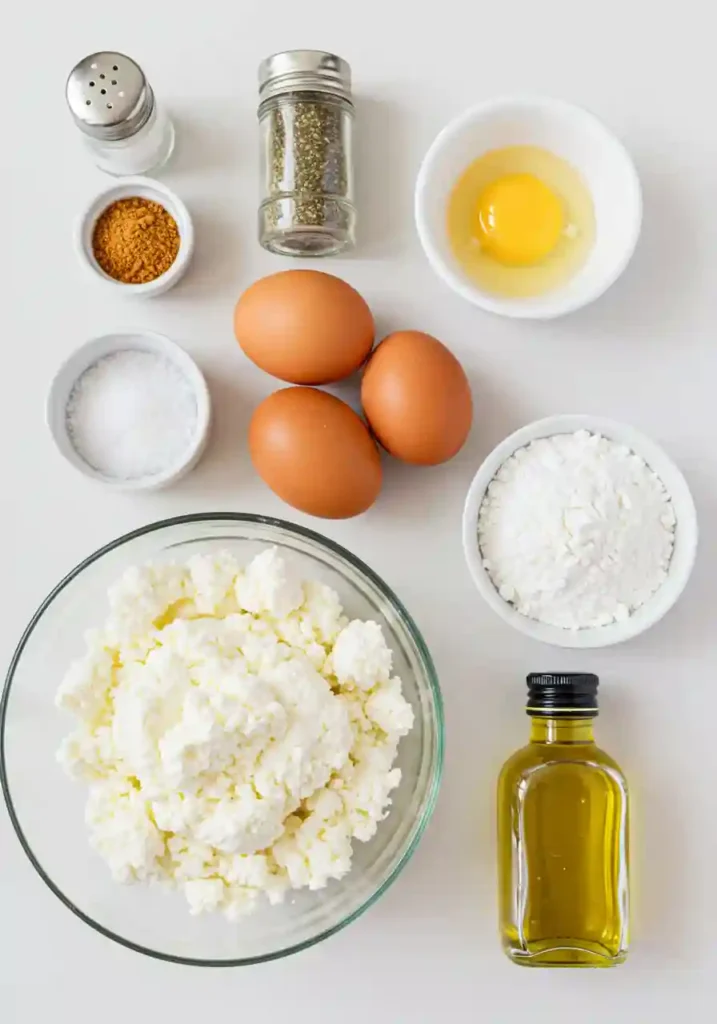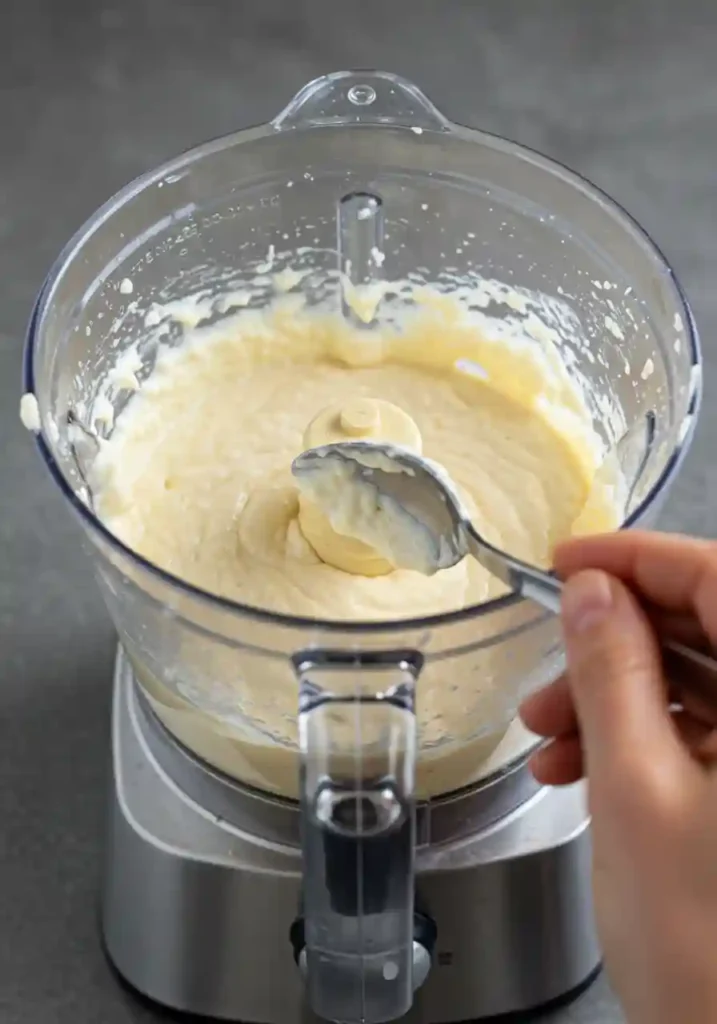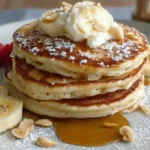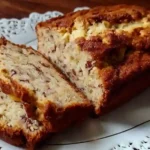Cottage cheese flatbread has revolutionized my approach to healthy eating, offering a simple yet incredibly versatile base for countless meals. This game-changing recipe transforms humble cottage cheese into a protein-packed flatbread that rivals traditional versions while delivering exceptional nutritional benefits.
I stumbled upon this recipe during a particularly busy week when I needed healthy easy foods to make without spending hours in the kitchen. What started as a desperate search for quick protein solutions became my go-to recipe for everything from sandwiches to pizza bases. This healthy flatbread recipe contains just three main ingredients yet delivers an impressive 20+ grams of protein per serving. Unlike traditional flatbreads that rely on refined flour, this cottage cheese alternative provides sustained energy and keeps you satisfied for hours.
The beauty of cottage cheese recipes healthy like this one lies in their simplicity. You don’t need specialized equipment, exotic ingredients, or advanced cooking skills. Even kitchen novices can master this technique in minutes.
Table of Contents
Ingredients: Simple Components for Maximum Nutrition
The genius of this recipe lies in its minimal ingredient approach. These recipes with minimal ingredients prove that sometimes less truly is more.

Essential Ingredients:
- 1 cup cottage cheese (full-fat or low-fat)
- 2 large eggs
- 1/4 cup tapioca starch or cornstarch
- 1/2 teaspoon salt
- 1/4 teaspoon garlic powder (optional)
- 1 tablespoon olive oil for cooking
Optional Flavor Enhancers:
- 1/2 teaspoon dried herbs (oregano, basil, or thyme)
- 1/4 teaspoon onion powder
- 1/4 teaspoon black pepper
- 1 tablespoon nutritional yeast (for cheesy flavor)
- 1/2 teaspoon paprika
Ingredient Quality Tips:
Choose cottage cheese with minimal additives for the cleanest flavor. Full-fat versions create richer flatbread, while low-fat works perfectly for lighter versions. Room temperature eggs blend more easily and create smoother batter.
For those wondering what to add to cottage cheese beyond the basics, consider herbs and spices that complement your intended use. Italian herbs work beautifully for pizza bases, while cumin and paprika create Mediterranean flavors.
The starch component is crucial for binding. Tapioca starch creates the most flexible texture, but cornstarch works well too. Avoid substituting with flour, as it changes the entire texture profile.
Instructions: Step-by-Step Flatbread Creation
Creating perfect cottage cheese flatbread requires attention to technique rather than complex steps. This method has been refined through countless batches.
Preparation Phase:
Step 1: Blend the Base Combine cottage cheese, eggs, starch, salt, and seasonings in a food processor or high-speed blender. Blend for 60-90 seconds until completely smooth. The mixture should resemble thin pancake batter.
Step 2: Rest the Batter Let the mixture rest for 5 minutes. This allows the starch to fully hydrate and creates better binding. Don’t skip this step, as it significantly improves the final texture.
Step 3: Check Consistency The batter should coat a spoon but still flow easily. If too thick, add 1 tablespoon water. If too thin, add 1 teaspoon starch and blend again.

Cooking Process:
Step 4: Prepare the Pan Heat a non-stick skillet or crepe pan over medium-low heat. Lightly oil the surface. Temperature control is critical for success.
Step 5: Pour and Spread Pour 1/4 to 1/3 cup batter into the center of the pan. Immediately tilt and rotate to spread into a thin, even circle. Work quickly, as the batter begins setting immediately.
Step 6: Cook the First Side Cook for 2-3 minutes until the edges look set and the bottom is golden brown. You’ll see small bubbles forming on the surface.
Step 7: Flip Carefully Use a thin, flexible spatula to flip gently. Cook the second side for 1-2 minutes until lightly golden.
Step 8: Cool and Store Transfer to a cooling rack. Stack with parchment paper between layers to prevent sticking.

Pro Tips and Variations: Mastering the Perfect Flatbread
After making hundreds of these cottage cheese meals, I’ve discovered techniques that consistently produce restaurant-quality results.
Expert Success Tips:
Temperature Control: Medium-low heat prevents burning while ensuring even cooking. High heat creates tough, rubbery textures.
Batter Consistency: The mixture should be smooth and lump-free. Strain through a fine mesh if lumps persist after blending.
Pan Selection: Non-stick or well-seasoned cast iron works best. Avoid stainless steel, which tends to stick.
Timing Matters: Don’t rush the cooking process. Properly cooked flatbread is flexible and tears easily when undercooked.
Creative Variations:
Pizza Base Version: Add Italian herbs, garlic powder, and a tablespoon of tomato paste to the batter. Creates perfect cottage cheese pizza dough alternative.
Sweet Version: Replace salt with 1 tablespoon honey and add cinnamon. Perfect for breakfast wraps or dessert applications.
Herb-Infused: Blend in fresh herbs like basil, cilantro, or parsley for vibrant flavor and color.
Spicy Kick: Add cayenne pepper, chili powder, or hot sauce for heat lovers.
Storage and Make-Ahead Tips:
These easy protein foods store beautifully. Refrigerate for up to 5 days or freeze for up to 3 months. Separate with parchment paper to prevent sticking.
For meal prep enthusiasts, make large batches on weekends. These recipes for on the go work perfectly when pre-made and stored properly.
Troubleshooting Common Issues:
Tearing: Usually indicates undercooking or too much liquid. Cook longer and adjust batter consistency.
Sticking: Insufficient oil or heat too high. Use more oil and reduce temperature.
Thick Texture: Too much starch or not enough liquid. Add water gradually until proper consistency returns.
Serving Suggestions: Endless Possibilities for Every Meal
The versatility of cottage cheese flatbread makes it suitable for breakfast, lunch, dinner, and snacks. These high protein meals snacks adapt to any flavor profile.
Breakfast Applications:
- Breakfast wrap with scrambled eggs and vegetables
- Sweet version with berries and Greek yogurt
- Savory option with avocado and tomatoes
- Protein-packed alternative to toast or bagels
Cottage Cheese Lunch Ideas:
- Turkey and vegetable wrap
- Hummus and roasted vegetable roll-up
- Tuna salad sandwich replacement
- Greek-style wrap with olives and feta
Cottage Cheese Sandwich Alternatives:
Replace traditional bread with this flatbread for any sandwich. The high protein content makes meals more satisfying while reducing carbohydrates.
Cottage Cheese Recipes Dinner Options:
- Personal pizza base with marinara and vegetables
- Quesadilla-style with cheese and peppers
- Mediterranean wrap with grilled chicken
- Taco shell alternative for soft tacos
Creative Cottage Cheese Toppings:
- Classic: marinara sauce, mozzarella, basil
- Mediterranean: olive tapenade, sun-dried tomatoes, arugula
- Mexican: salsa, avocado, cilantro, lime
- Middle Eastern: hummus, cucumber, red onion
Appetizer and Snack Ideas:
Cut into triangles and serve with dips, or roll with cream cheese and herbs for elegant pinwheels. These minimal ingredient meals work perfectly for entertaining.
Conclusion: Your New Favorite Protein-Rich Base
This cottage cheese flatbread recipe has transformed how I approach healthy eating. It proves that nutritious food doesn’t require complicated ingredients or lengthy preparation times. The combination of high protein content, minimal ingredients, and incredible versatility makes this recipe invaluable for anyone seeking healthier alternatives to traditional bread products. Whether you’re following keto, low-carb, or simply want to increase your protein intake, this flatbread delivers.
As someone who has tested countless healthy protein food recipes, I can confidently say this cottage cheese creation stands out for its simplicity and results. The texture rivals traditional flatbreads while providing superior nutrition. The recipe’s adaptability means it never gets boring. Sweet versions work for breakfast, savory options shine at dinner, and the basic recipe serves as a blank canvas for creativity.

Cottage Cheese Flatbread
Ingredients
Method
- In a blender or food processor, add cottage cheese, eggs, rolled oats, baking powder, and salt. Blend until smooth and thick.
- Preheat a non-stick skillet over medium heat. Lightly grease if necessary.
- Pour 1/4 cup of batter into the skillet and spread gently into a round flatbread shape.
- Cook for 2-3 minutes until bubbles form and the bottom is golden. Flip and cook another 2-3 minutes until set.
- Repeat with remaining batter. Serve warm as wraps, sandwiches, or alongside dips.
Notes
- Calories: 285
- Total Fat: 12g
- Saturated Fat: 4g
- Cholesterol: 195mg
- Sodium: 380mg
- Total Carbohydrates: 18g
- Dietary Fiber: 2g
- Sugars: 14g
- Protein: 22g
FAQs: Common Questions About Cottage Cheese Flatbread
Can I make cottage cheese flatbread without eggs?
Eggs are essential for binding in this recipe. For egg-free versions, try flax eggs (1 tablespoon ground flaxseed + 3 tablespoons water per egg), though the texture will be different.
How long does cottage cheese flatbread last?
Properly stored flatbread lasts 5 days refrigerated or 3 months frozen. Stack with parchment paper between layers to prevent sticking.
Can I use Greek yogurt instead of cottage cheese?
Greek yogurt works but creates a different texture and lower protein content. Strain excess liquid and expect a slightly tangier flavor.
Is this recipe truly gluten-free?
Yes, when made with tapioca starch or cornstarch, this recipe is naturally gluten-free. Always check starch labels to ensure no cross-contamination.
Why does my flatbread tear easily?
Tearing usually indicates undercooking or too much liquid in the batter. Cook until golden brown on both sides and adjust liquid content for future batches.
Can I make larger flatbreads?
Yes, but thinner is better. Large, thick flatbreads cook unevenly. Multiple smaller flatbreads work better than one large one.
What’s the best way to reheat cottage cheese flatbread?
Dry pan heating works best to maintain flexibility. Microwave for 15-20 seconds or toast lightly in a dry skillet.
Can I add protein powder to increase protein content?
Yes, add 1-2 tablespoons unflavored protein powder, but you may need to adjust liquid content as protein powder absorbs moisture.



